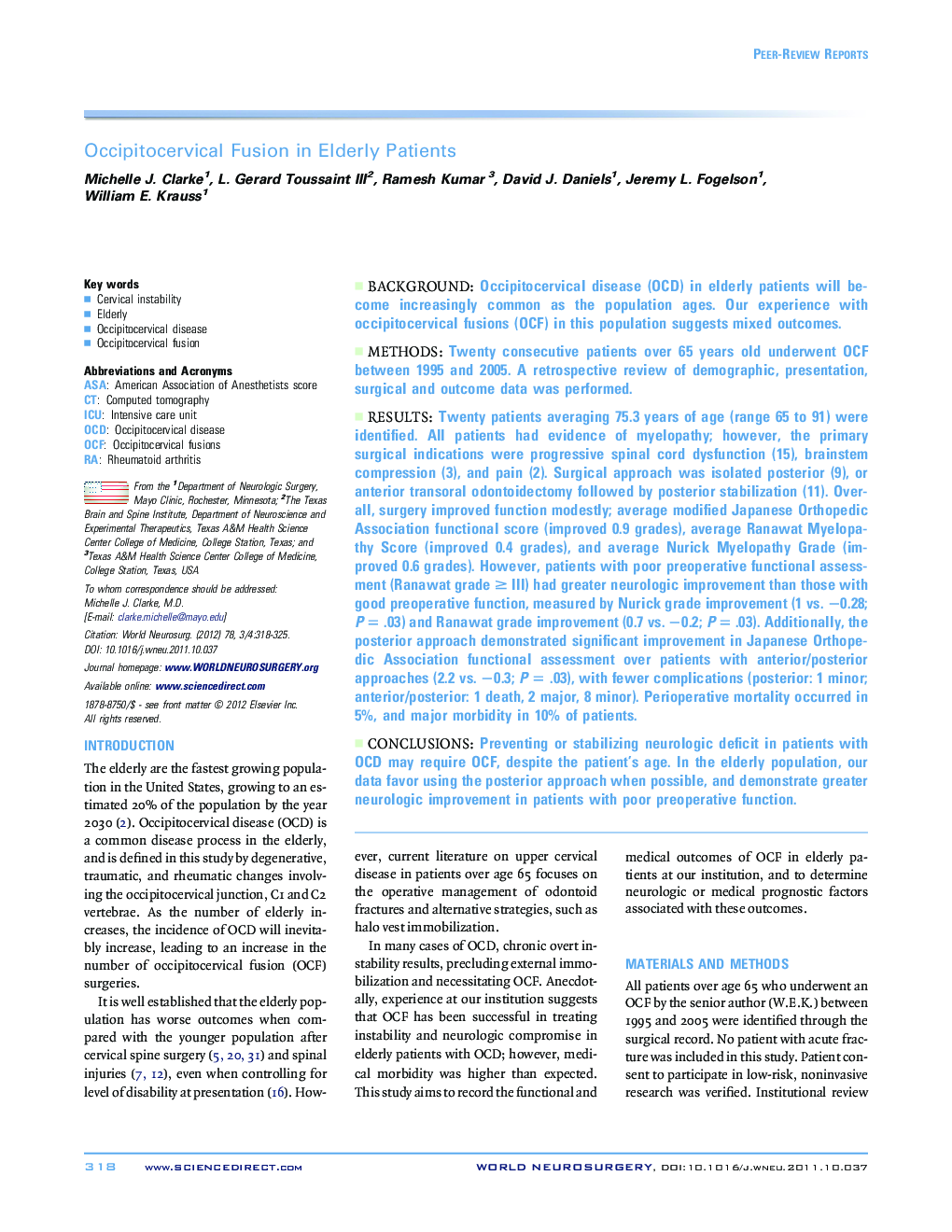| Article ID | Journal | Published Year | Pages | File Type |
|---|---|---|---|---|
| 3096337 | World Neurosurgery | 2012 | 8 Pages |
BackgroundOccipitocervical disease (OCD) in elderly patients will become increasingly common as the population ages. Our experience with occipitocervical fusions (OCF) in this population suggests mixed outcomes.MethodsTwenty consecutive patients over 65 years old underwent OCF between 1995 and 2005. A retrospective review of demographic, presentation, surgical and outcome data was performed.ResultsTwenty patients averaging 75.3 years of age (range 65 to 91) were identified. All patients had evidence of myelopathy; however, the primary surgical indications were progressive spinal cord dysfunction (15), brainstem compression (3), and pain (2). Surgical approach was isolated posterior (9), or anterior transoral odontoidectomy followed by posterior stabilization (11). Overall, surgery improved function modestly; average modified Japanese Orthopedic Association functional score (improved 0.9 grades), average Ranawat Myelopathy Score (improved 0.4 grades), and average Nurick Myelopathy Grade (improved 0.6 grades). However, patients with poor preoperative functional assessment (Ranawat grade ≥ III) had greater neurologic improvement than those with good preoperative function, measured by Nurick grade improvement (1 vs. −0.28; P = .03) and Ranawat grade improvement (0.7 vs. −0.2; P = .03). Additionally, the posterior approach demonstrated significant improvement in Japanese Orthopedic Association functional assessment over patients with anterior/posterior approaches (2.2 vs. −0.3; P = .03), with fewer complications (posterior: 1 minor; anterior/posterior: 1 death, 2 major, 8 minor). Perioperative mortality occurred in 5%, and major morbidity in 10% of patients.ConclusionsPreventing or stabilizing neurologic deficit in patients with OCD may require OCF, despite the patient's age. In the elderly population, our data favor using the posterior approach when possible, and demonstrate greater neurologic improvement in patients with poor preoperative function.
